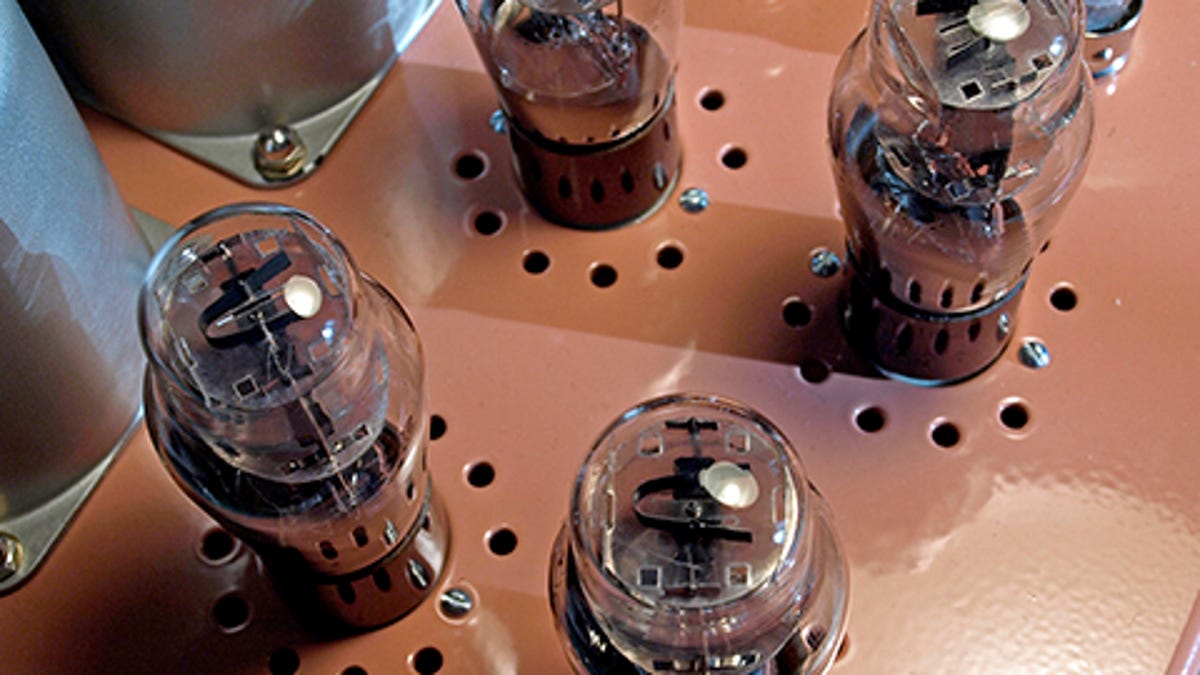Listening to music in a vacuum--or why some audiophiles love the sound of tube amplifiers
The Audiophiliac checks out the magical sound of flea powered vacuum tube amplifiers.

It's like the difference in taste between a tomato you grew in your backyard or one of those plastic things at the supermarket, or frozen pizza vs. a slice fresh out of the oven in Little Italy. We're talking big differences here. And those are the sort of sensual pleasures high-end audio delivers compared to iPods and ear buds. Sure, the little buggers sound good enough, but if you really love music, don't you want to hear your tunes sound as good as they can?
I'm sitting here listening to the late British singer/songwriter Nick Drake, and his lines "Do you feel like a remnant of something that's passed?/Do you find things are moving a little too fast?" put the consumer electronics' current ball of confusion in perspective. If you've had enough of the never ending parade of formats: cassette, LP, CD, DVD-Audio, SACD, AAC, FLAC, Dolby Digital, Dolby TrueHD, DTS, DTS-ES, DTS 96/24, DTS Master Audio, Blu-ray, DVD, HD DVD, HDMI, HDMI, 1.1, HDMI 1.2, HDMI 1.3, HDMI 1.3a, and now HDMI 1.3b, you might be ready to drop out.
This little Darling 1626 amplifier that came to me from George Lenz of TubesUSA is the perfect antidote to that malaise. The amp is an all-vacuum tube design (no transistors) and hooked up to my Zu Audio Druid Mk IV speakers the sound is spectacularly beautiful. There, I said it, the "B" word, which is after all, why musicians seek out old Martin guitars and Steinway pianos. It's why some folks go for early analog Moog synthesizers. It's the sound baby!
It's the same deal with vacuum tube audio amplifiers, they somehow coax more natural sound from recordings than solid state or digital amplifiers do. The tone feels richer, warmer, sweeter, more like the way instruments sound in real life. My recordings take on a dimensional solidity, and vocals sound distinctly more flesh and blood human. Tubes also look really cool; sure, they have their followers here in the land of Coca Cola, but European and Asian audiophiles are even more devout believers.
The Darling 1626 amplifier goes for $2,500, but this amplifier wasn't born in a factory; Lenz only builds one when he has a buyer. He imports all sorts of tubes and not only tests each one, he actually takes the time to listen to them as well! He also sells exotic Japanese amps, like the Kurashima 2A3 integrated amplifier ($4,995) that pumps out four (4) watts per channel, double the juice of the Darling, but since my Zu speakers are extremely efficient, they can sing with a couple of watts. These handmade amplifiers aren't cheap, but the pleasures of living with handcrafted designs are a big part of their appeal. The people like Lenz who build these things do it for the love of it, and that's a rare commodity in the twenty first century. The TubesUSA Web site is loaded with great info, especially for the hard-core DIY (do it yourself) audiophile crowd.

